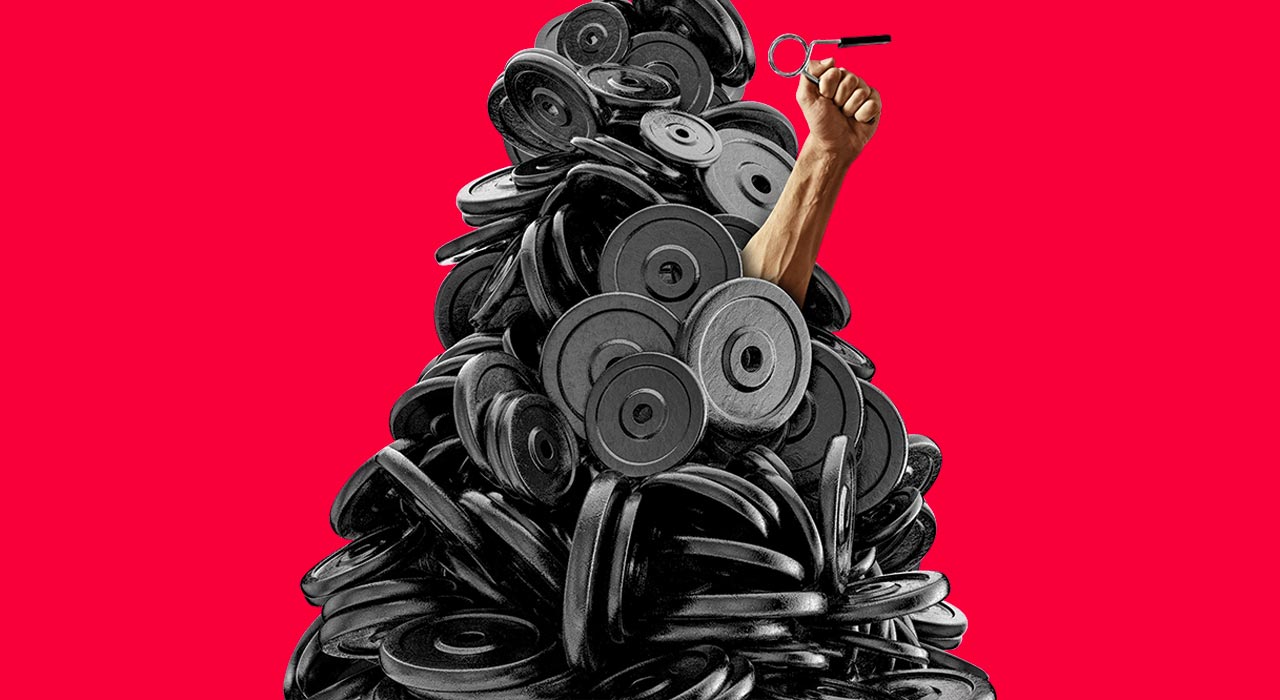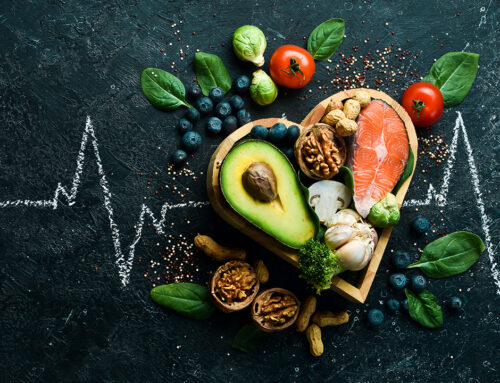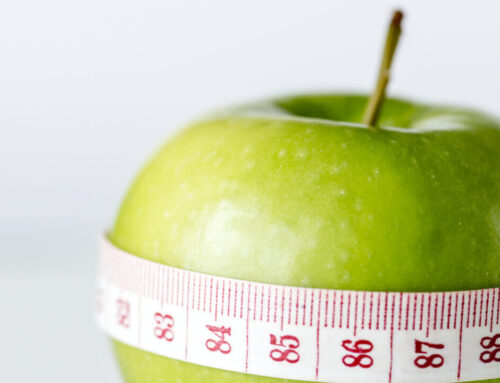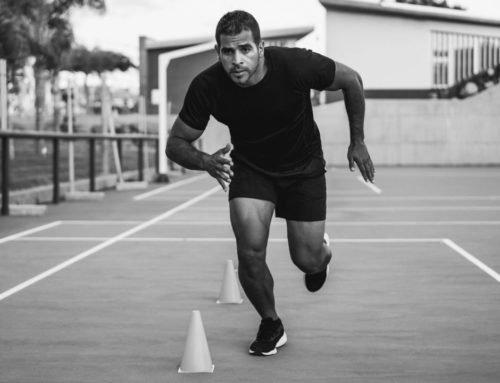From overdoing the bench press to gorging on avocados, there’s only so much of a positive change you can use until you hit diminishing returns. Here’s why moderation should be your motivation.
You can have too much of a good thing, it seems. And yes, that even goes for fresh air, protein and exercise, the three things you always thought you could never get enough of (well, along with sex). Fact is, you can’t really separate quantity from quality, even for those things you value most highly. On the one hand, something that is of high quality in small amounts can be deadly in big quantities; but on the other hand, some things only become high quality when they’re done in big quantities.
You might be surprised to discover some of the good things you simply do too much of…
EVERYDAY FAILS
It’s good to go… but some of us may be enjoying sitting on the porcelain throne for too long. It’s okay to kind of like it there. It’s peaceful, no one is allowed to come in and bother you in this sacred place. You’ve got your entertainment on hand, whether that’s your phone, a book or a magazine, and actually, it’s pretty comfortable. Unless, that is, like many lifters and exercisers on a high-protein diet, you’re constipated. A diet high in protein is notorious for blocking up the system, leaving you sitting on the toilet, straining, and potentially putting you at risk of hemorrhoids.
But there’s fiber! And fiber makes you regular, feel full and protects your heart. It’s a wonderful thing. Unless, that is, you overdo it. “Fiber has a number of health benefits but, as with any single food group, more is not better, and there is a point of diminishing return,” says registered nutritionist and qualified personal trainer Sophie Thurner, (www.sophiethurnernutrition.com). “Too much fiber irritates the intestinal tract, which is likely to lead to intestinal gas, bloating and sometimes diarrhea. Additionally, dietary fiber soaks up liquid, almost like a sponge. Increasing fiber intake can therefore deprive cells of the water they need to work efficiently.
Upping water intake when you have a lot of fiber is key. In extreme cases, insufficient hydration may inhibit fiber from being transported through the digestive system and result in the formation of a mass that can end up in an intestinal obstruction.”
That doesn’t sound very comfortable, does it? But don’t put your bowl of bran flakes away just yet, most people don’t get nearly enough fiber in their diet (the average is around 15g a day, and the recommendation is more than double that at 38g) and that might be the case for you too.
The interesting thing about fiber is that it has a long-term effect on your body – if you’ve always had a relatively fiber-full diet, you’re less likely to suffer with an intestinal obstruction because your body is accustomed to it. If, however, you hit 30, never having even tasted whole wheat anything, let alone broccoli or kale, and you suddenly start cramming it in along with those fiber-based weight-loss supplements, your body might struggle. You’ll experience constipation or diarrhea, bloating and gas. So start slowly and ease yourself into it.
And get yourself acquainted with the two types of fiber: soluble and insoluble. Soluble is the stuff found in oats, nuts, seeds, peas, broccoli and Brussels sprouts. Unlike insoluble fiber, as the name suggests soluble is broken down in your digestive system. Insoluble fiber (found in wheat or oat bran, beans, and also in vegetables) is like a carrier, adding bulk and helping get all the solid waste out of your body in the form of an easy-to-pass stool.
If you’re building muscle, make sure you get 25-30g of fibre (in total, of both soluble and insoluble) per day. While you might doubt the value of filling your plate with a non-protein non-calorific food, not only will it aid nutrient release by steadying the digestive process, it also keeps your body in anabolic state for longer, helping to decrease muscle loss.
DITCH THE SPRITZ
Aftershave was not originally intended to be cosmetic; it was meant to keep you healthy. After shredding your poor skin with a razor, the alcohol-based aftershave was intended to protect you against infection and close up open pores.
But while alcohol will kill off bacteria it makes more sense to clean your face and your razor before you shave, to prevent infection at least. Even with the electric razors and beautifully sharp blades that are available now, your skin is still fragile just after shaving, so why would you want to add to the pain with aftershave?
It’s not just about your sensitive skin – aftershave or fragrance often contains a dizzying number of chemicals that we often have adverse responses to. And we don’t just mean the subjective like or dislike of a certain scent – around one in ten people have genuine allergic reactions to commonly-used chemicals in fragrances, experiencing irritation, contact dermatitis and even eczema.
What’s more, FDA regulations don’t require that fragrance labels are as detailed as other cosmetic products, so a scent may simply state ‘fragrance’ as one of the ingredients, when this itself may contain many chemicals.
Furthermore, any alcohol-based aftershave or fragrance on your skin is drying and by shaving you’ve already scraped away a lot of those natural oils, so to avoid irritating your skin further, use as little as possible and then afterwards apply a soothing balm or moisturizer containing aloe vera, a plant known to soothe inflammation. Baby soft cheeks will be yours, all without the nappy rash-like razor burn.
DAMMING THE INLET
Getting stuff out of your body is dramatically affected by how much of certain foods you put in, obviously, and this doesn’t just apply to your poop. You’re probably careful to make sure you don’t overeat in general, because you want to maintain a healthy weight. And, while eating fat is no longer the sin it used to be, there’s still good reason to pay attention to one particular source of fat we all seem to be gorging ourselves on, avocados. So the whole world, it seems, has taken to putting avocado in everything from smoothies to sauces, on toast and in sandwiches. It’s creamy and delicious, but healthy! Except, that is, when you eat an avocado a day along with all the rest of your food. “While avocados contain mostly unsaturated, i.e. the healthy kind of fat, they do have a very high fat content,” says Thurner. “Since fat has more than double the amount of calories per gram than protein and carbs, they are highly calorific. A medium avocado, has about 220kcal. Fatty foods slow down gastric emptying and can lead to bloating, especially when in combination with a lot of fiber.” Treat avocado as you would cheese or other high-fat foods that are really delicious – it’s a treat, not an ‘eat all you want’ so-called super food.
SUPERFOOD FARCE
And speaking of superfoods, there are a host of other foods that, along with avocados, have also been awarded this farcical special label. But we really need to take care here. If there’s no such thing as Superman, why do we fall for the trap of thinking a food can be a superfood? What can it possibly mean? That the food is better than all other food? Or that it is the best version of that particular type of food? Whoever coined the term probably wasn’t thinking about it that deeply. “The word ‘superfood’ has no official definition and the EU has banned the use of the word on packaging,” says Thurner. “This is because they are typically just fruits or vegetables with an abundance of micronutrients, just like any other fruit or vegetable, but with better marketing. The term “superfood” is ambiguous and misleading because it indicates that they may be magical and have health benefits higher than other fruits and vegetables, which is simply not true because numerous traditional non-superfood plants harbor comparable levels of these nutrients. Açai berries, for instance have a hefty price tag because they need to be flown in from South America. But local produce (like blueberries and blackberries) is not only cheaper, but often also packed with the same, if not greater amounts of anti-oxidants, and higher contents of vitamins, like vitamin C (redcurrants). Another example is chia seeds. While chia seeds are termed a “superfood” and are therefore significantly more expensive than flax seeds, they contain less protein, fewer omega 3 fatty acids and less magnesium than flax seeds.”
The problem here, it seems, is that we’re being sold something ‘magic’ when really it’s simply a healthy food. In all likelihood, adding a so-called superfood to your diet won’t change your life – or body – especially if your diet and lifestyle is generally lacking anyway.
“If you have an unbalanced diet, lack sleep and have little movement in your life, having a daily smoothie with spirulina, maca, kale, avocado, chlorella and collagen will not compensate.” Save your money and start with the basics of healthy eating instead: plenty of fruit and vegetables, protein in the form of beans, lentils, fish and lean meat, keep an eye on your fat intake, and keep sugar to a bare minimum. Add lots of liquid to that, and you won’t need any of those unpronounceable superfoods anyway.
THE HOLY PROTEIN
But protein… surely, if there’s one thing you can’t ever overeat, it’s got to be protein? Okay, too much protein isn’t likely to kill you. While there have been a few studies showing that it can lead to kidney problems and excess uric acid, the people most at risk are those who already have kidney or liver disease. But there is a dark side to eating more than 2g of protein per kilogram of bodyweight and it’s down to how much room you have in your stomach, really.
“Protein is an essential nutrient, vital for the structure of your body (hair, nails, muscle tissue, bones, red blood cells) and its functions (cell renewal, enzymes, hormones, neurons and neurotransmitters, antibodies),” says Thurner.
That doesn’t mean you should eat protein to the detriment of other foods and that’s exactly what can happen when you eat too much. Protein is incredibly filling – once you’ve hacked your way through a slab of steak for example, do you really feel like wolfing down a plate of green vegetables or even a handful of nuts or berries? The answer is, probably not.
There are pages and pages of studies published in medical journals showing the benefits of a plant-rich diet, from reduced risk of cardiovascular disease, to a smaller waist circumference, less abdominal fat and a healthier body mass index. These are benefits you wouldn’t want to miss out on, especially when eating excess protein won’t make you pack on the muscle any faster anyway.
Make sure that no more than 30% of your daily calories come from protein and aim for your diet to be heavier on plant-based foods, remembering this includes grains, nuts and fruits, not just the obvious foods such as spinach and broccoli.
MUSCLE MINDED
Let’s be honest, one of the main reasons why everyone lifts is appearance and there are few things more desirable than looking fit. However…
“Go to any gym on a Monday night and you will probably find a group of guys on the bench press lifting heavy and grunting hard in the hope of developing a full barrel chest. Unfortunately, too much pushing and not enough pulling can bring about the opposite effect,” says personal trainer Neil McTeggart (@neilmct). “Imagine this. You drive to work. You sit at a desk. You eat at your desk and drive to the gym after clock out time. Once there, you sit on machines or spend the majority of your workout pressing and pushing various weights from a collection of angles. While you need a degree of pushing to develop muscle, a lack of balance will not only pull the shoulders forward and increase shoulder problems and injury risk but the chest can even look smaller and almost caved in from the profile angle.” We’ve all seen those guys. The ones who look like they have invisible lines pulling their shoulders forward, even though they also look like they spend hours at the gym. It’s simply because they’re doing too much of one good thing—pushing/pressing—to the detriment of pulling exercises, which might not seem as ‘sexy’ in terms of muscle build (Deadlift, the Snatch-Grip Pull and rows), but are absolutely essential for a fully formed muscular body that functions in all areas. If you want to look good from the front and side, you better make damn sure the back of you is strong enough to facilitate it.
CHASING THE HIGH
Keeping your focus too narrow, on one particular type or style of exercise is never going to be a good thing. The problem is that with certain types of exercise, running or HIIT training for example, you’re facing a special kind of challenge – the fact that you might be physically addicted to the rush. Doing a five-mile run or hardcore HIIT session at the gym unleashes a whirlwind of endorphins and other chemicals that make you feel fantastic. And, like all addictive feelings, you’re left wanting more and more. How can that be bad, you’re thinking? I’ll just get fitter and fitter! Well, not necessarily. Research from the journal Circulation found that while sedentary people had higher mortality rates compared with those who didn’t exercise, those people who exercised daily doing high-intensity workouts weren’t actually any better off, health-wise, than those who worked out less often and they even had a higher risk of dying from all causes. The researchers aren’t sure why this might be, but theorize there could be a higher risk of injury or the results of putting your body under such regular stress, not giving yourself sufficient time to recover and allowing inflammation levels to return to normal. You can keep going with those high-intensity workouts, but mix it up. Two days off a week, two or three days lifting and two or three days doing high-intensity exercise and one day doing light exercise such as walking or cycling will give you the variation you need.
And if you’re reading all this, thinking none of this relates to you because despite what we say, you’re ecstatically happy with the way you work out, eat and poop, believe it or not, you could possibly be too happy for your own good. According to research from the University of Colorado, Boulder, USA, people who report being happy at 18 are more likely to do better in education, career and even earn more than their more miserable counterparts. However, those who report being extremely happy (in the 90th percentile) might actually do worse! The researchers aren’t sure why this happens, but it could be that being extremely happy makes you less competitive – after all, why try hard when you’re already feeling so great? Or it could be that extremely happy people take more risks. Either way, it’s reason to celebrate occasional non-happiness. Some may call it being grumpy – you can call it looking after yourself. Humph.







